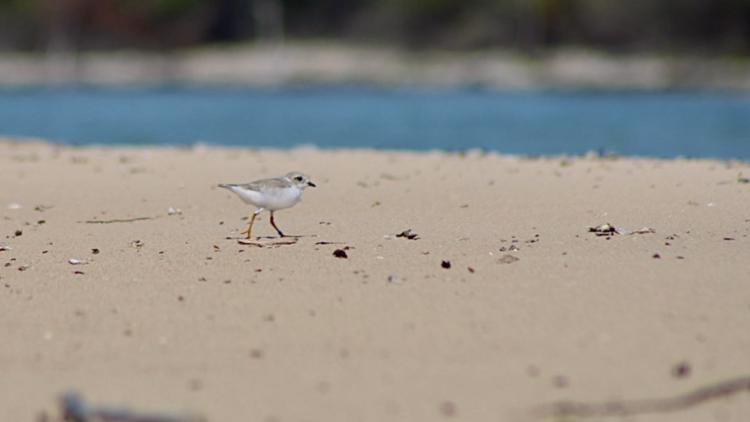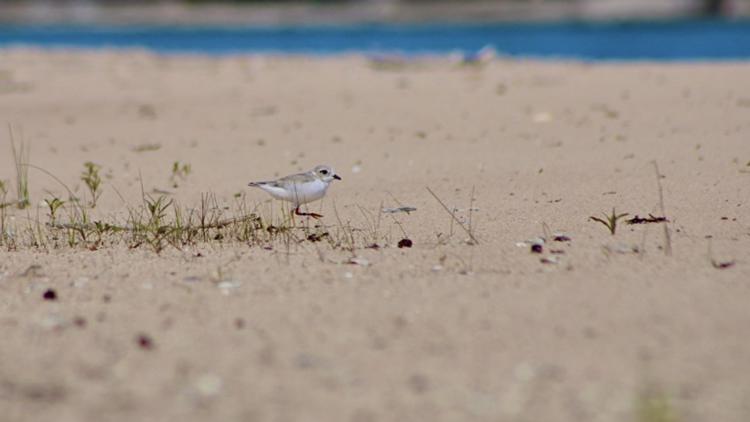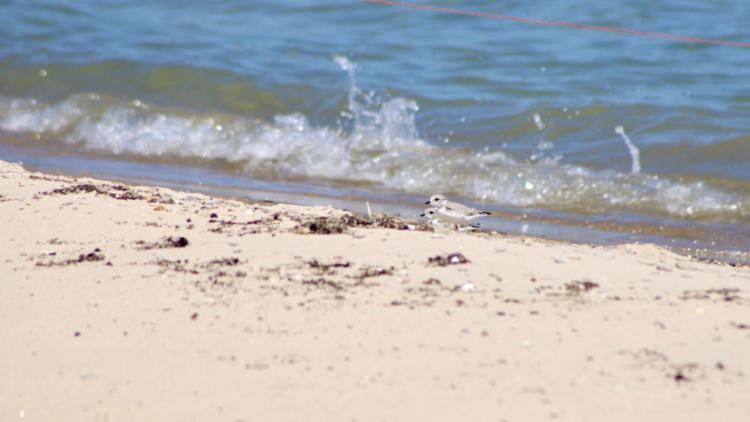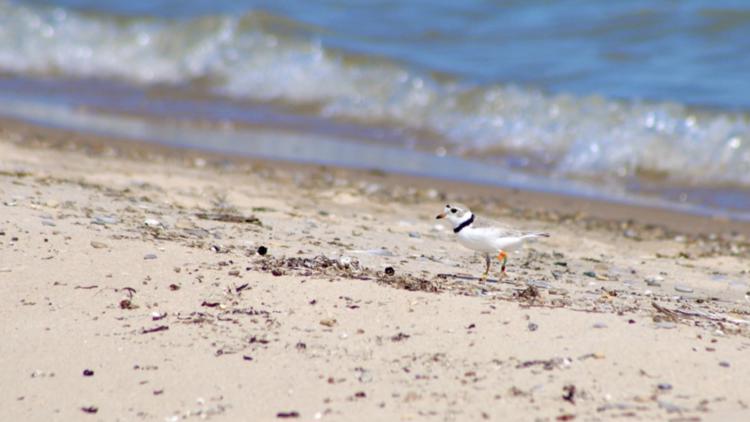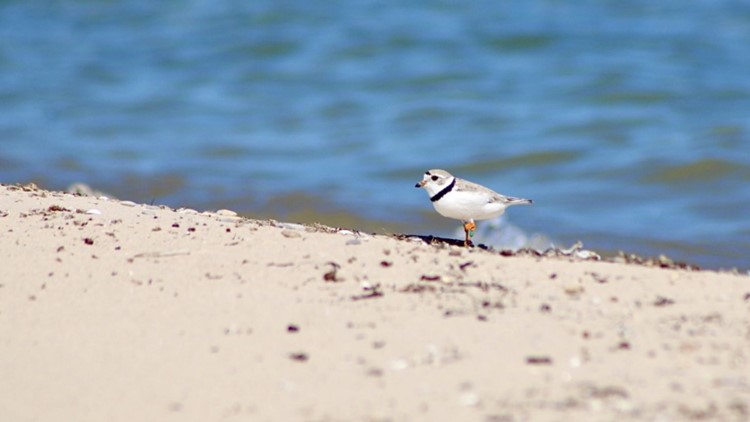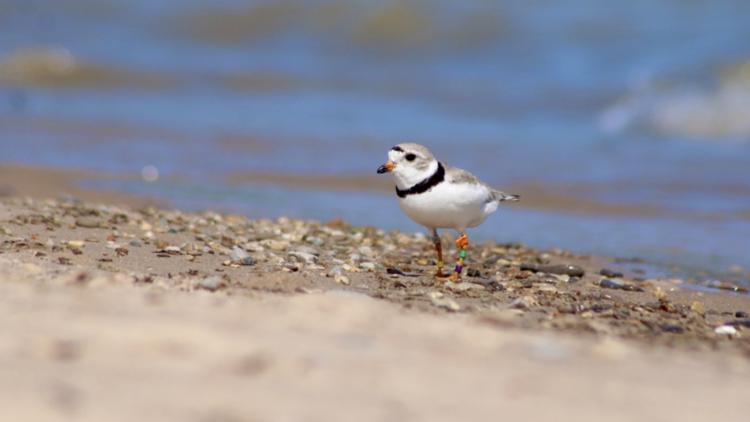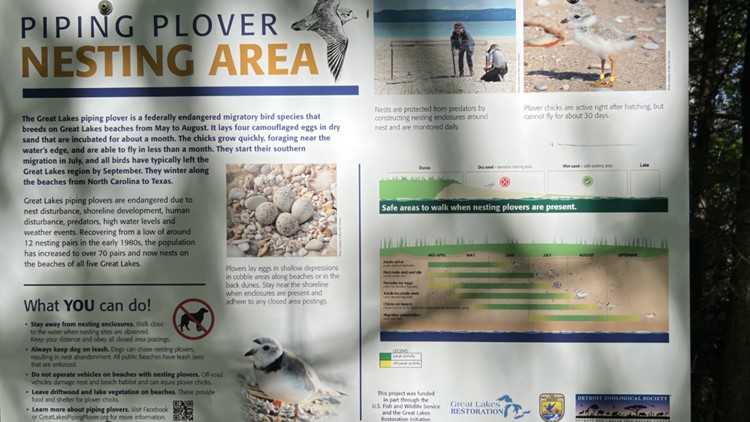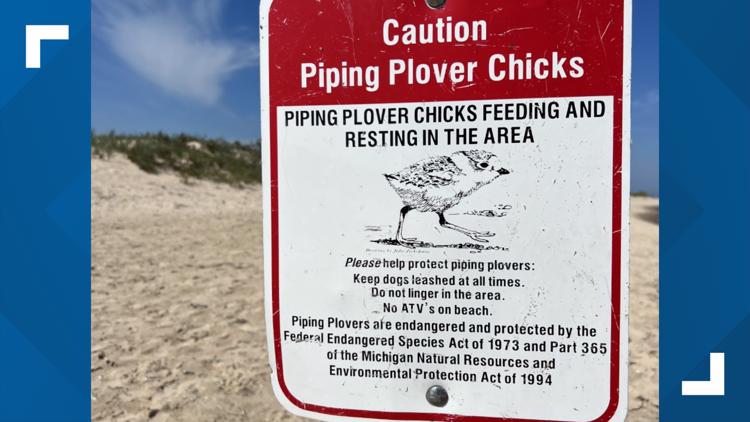CHARLEVOIX, Mich. — On a hot summer afternoon, campers and beachgoers flock to the Lake Michigan shoreline at Fisherman’s Island State Park.
The last thing you see before you hit the beach is a sign letting sunbathers know to be careful and watch out for an endangered bird that this area nearly lost.
The Great Lakes Piping Plover is a subspecies of the piping plover. They winter in the southern U.S. from North Carolina to Texas. But around the same time tourist season really picks up in Michigan, these tiny birds make their nests on the same beaches people love so much.
Or at least they try to. But in the 1980s, the sign notes, the Great Lakes were down to just 12 breeding pairs of piping plovers.
“Their numbers had been declining for some time when they were listed as endangered. Their habitat has been disturbed by shoreline development, primarily, as well as disturbance to nests and fledglings,” said Jennifer Kleitch who serves as an endangered species specialist with the Michigan Department of Natural Resources.
The federal government stepped in to protect Great Lakes Piping Plovers in the early 2000s, and since then, the shorebirds have shown some signs of a rebound.
“This year 73 nests were observed and 65 of those nests hatched, totaling 231 chicks from those wild nests. That is a little lower than last year, but still a good progress,” Kleitch said.
Multiple organizations that are monitoring piping plovers have noticed that previously unoccupied areas are being used for nesting. That includes Fisherman’s Island. The park’s plover pair that nested there this year is the first pair to do so since 2004. The Fisherman’s Island pair fledged three chicks.
Meet the Great Lakes Piping Plovers of Fisherman's Island State Park
“The hope is that if the habitat remains suitable, that they will return and continue to use those nests,” Kleitch said.
The DNR has a recovery goal of between 1.5 and 2 chicks per pair. Right now, Kleitch said that number sits at 1.6 or 1.7 chicks per pair.
The Great Lakes Restoration Initiative helps fund the monitoring of piping plover nests and chicks. Tribes, agencies, nonprofits, universities, zoos and individuals all play a role in that monitoring and protecting process.
Many people in West Michigan noticed areas of Muskegon State Park and the Silver Lake Sand Dunes being marked off where piping plovers are known to be nesting.
“That would be important to continue, and protecting the shorelines of our Great Lakes is also a big part of that,” Kleitch said.
So what makes the Great Lakes Piping Plover so special? For one, they are almost universally considered cute. Larger than a sparrow, but smaller than a robin, these shorebirds can be seen scampering quickly along the shoreline looking for their favorite foods. According to the Cornell Lab of Ornithology those include worms, small crustaceans, flies, water beetles, snails and roundworms.
“The Great Lakes Piping Plover is kind of a symbol of untouched shoreline that is in a natural state, and they are just a wonderful bird. They're fun to watch,” Kleitch said.
Many of the piping plovers who made their nests in West Michigan this year have already begun their southern migration. That includes birds from Muskegon State Park, Ludington State Park and the Silver Lake Sand Dunes. But in the future, Kleitch says everyone has a role to play in keeping this species safe and its numbers growing.
“By leaving nests alone, or keeping their distance and keeping dogs on leashes while at the beach - things like that. People are kind of heeding the signs that are out there that say to do those things. That helps. Also, just being aware that they’re there and learning more about the species is a great idea, so that you can protect them as well,” she said.
To learn more about piping plovers, you can visit the Cornell Lab website along with the Audubon Field Guide.
►Make it easy to keep up to date with more stories like this. Download the 13 ON YOUR SIDE app now.
Have a news tip? Email news@13onyourside.com, visit our Facebook page or Twitter. Subscribe to our YouTube channel.





